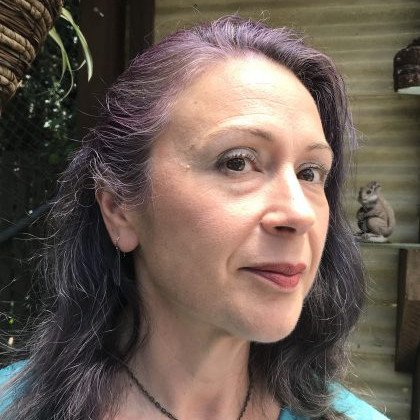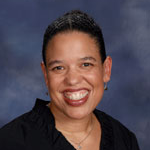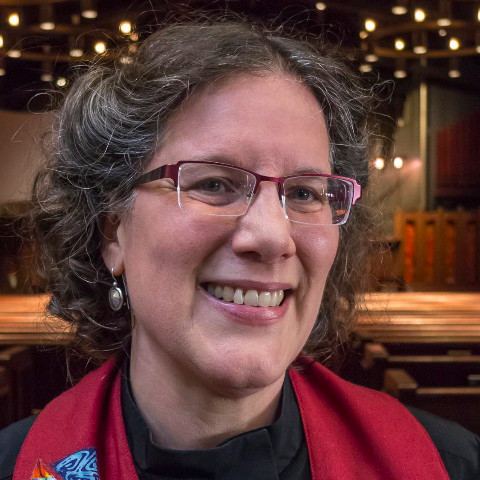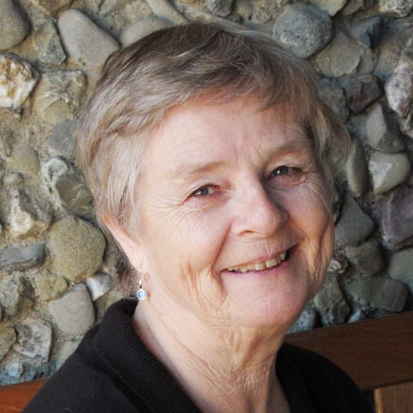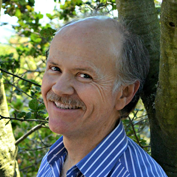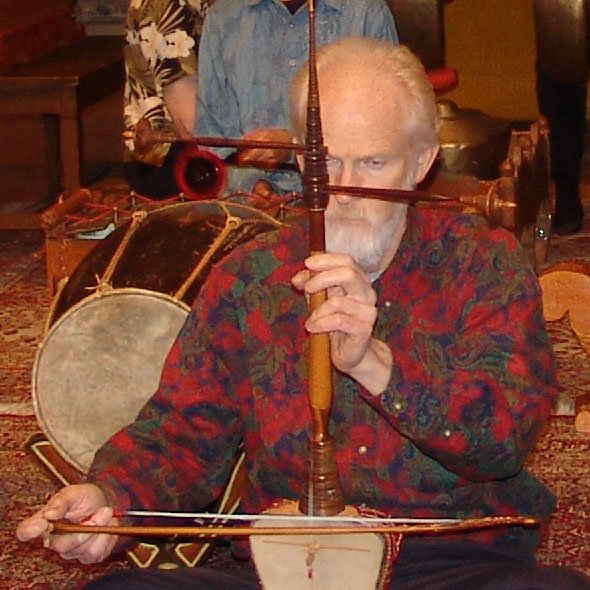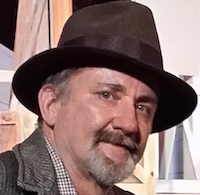{podcast_episode 187}
After her freshman year in college, Anish, also known as Heather Anderson, “signed on for a summer program in the Grand Canyon. She, like many young women, did not like her body and consoled herself by eating Oreos and milk like they were cereal.”
Captivated by the canyon, though it was 115 degrees and she was very unfit, Anish was determined to be like a girl she was with who decided to hike to Indian Garden and back. On the way back up, she ran out of food and water and nearly succumbed to dehydration. She had to dig deep as the mules passed her by in order to make it to the rim, no matter how horrible she felt, or the many extra pounds she weighed. It was the hardest thing she had ever done, it was “baptism by suffering,” and when she got to the rim, she was someone new.” She says that day, she “lost her heart and soul” to the Canyon – she found something bigger there – a place she belonged.
Many yearn to experience this planet as a place that doesn’t judge us, a cradle for humanity, a place where we feel love surrounding us all.
Anish went on to hike not only all over the Grand Canyon that summer, but to do the Triple Crown – the Appalachian Trail, the Continental Divide Trail through the Rocky Mountains, and the Pacific Crest Trail from Mexico to Canada through California, Oregon and Washington. Still she wanted to know what she was capable of doing, so last summer on June 7th, she set out to do the 2650 mile Pacific Crest Trail as fast as she could. Anish, like many who do the PCT, was grappling with why she couldn’t be happy with the things that made her parents, her friends and her siblings happy. She had experienced the healing capacity of hiking a trail, she set out once again, to “free her soul.”[1]
Anish told Backpacker Magazine in their August 2014 issue, “Whether I succeed (in setting a new speed record for the PCT) or not, I will push myself beyond my current limits and find a stronger, braver woman in the process,” She did indeed set a record, hiking the trail in 60 days.
Finding a stronger, braver self is also what Cheryl Strayed’s story Wild, delivers. Strayed tells of how she survived most of the Pacific Crest Trail in spite of having no outdoor experience.
As another hiker, Ryan Burke, put it to me like this, “I want to flirt with my boundaries, to find out where my limits are.”
Certainly, finding out what one’s physical, emotional, and even cleanliness and grooming limits are, is part of hiking the PCT.
For me, finding out the limits of California‘s beauty and landscape variety was also part of hiking the trail.
I ruled out hiking the whole trail – I had neither the time, the fitness, nor the desire to be away from home for 6 months. I didn’t think I was up to the rigors of regular waterless stretches of 15-38 miles that required carrying heavy loads. I decided to dedicate 2 months to doing the trail, and to do it in a way that makes sense given my restrictions and interests.
Even though the water situation in the first 700 miles of the California desert is bleak, especially given the drought we are in, I wanted to connect with the desert landscape in a way similar to having experienced the granite domes, rushing rivers, and buoyant wildflowers of the Sierra Nevada, which John Muir so accurately called the range of light.
I started at I-10 and hoped to hike as far as the Southern Sierra Nevada.
The desert is a place of elemental beauty – rarified air that can be a cool breeze at sunset or a dry heat allowing the long view to a distant rock feature. A place where sometimes subtle and sublime colors emerge as distractions are held to a minimum. A place where even a single cloud on the wide sky is a miracle – especially at sunrise and sunset.
Before the PCT, I knew California’s desert as a place teaming with millions of people near the coast, and as unbearably hot to drive closer to Barstow. There are sections on the PCT of the desert where it is necessary to carry at least 15 pounds of water, and I decided to keep those to a minimum. Nothing could prepare me then for Whitewater Preserve between Riverside and Palm Springs that was abundant with wildflowers of every color and origin.
Almost immediately upon starting the trail, I knew that connecting with the landscape was a piece of the puzzle I was there to put together. I needed the time and space to contemplate the freedom of the birds, the lazy flow of the river, and the abundance of flowers open to everything.
Just as we brought ragged, broken, and frayed pieces of pottery and jewelry to church a few years ago to symbolize our sense of being spiritually frayed at times, and then reassembled them into our tree of life mosaic, there were pieces of the puzzle of living in California I wanted to reassemble.
The pieces of living as an immigrant from another part of the Southwest, connecting to the landscape as a Westerner, and even figuring out my piece of the puzzle in this drought. I wanted time to play with these pieces, to take them apart and create a new way of seeing and being.
Like Cheryl Strayed I hiked the trail because I wanted to find a different way to walk in the world. Unlike Strayed, I had wilderness and backpacking experience, I was happy with my marriage, and I didn’t want a complete life overhaul.
I think most people out there are on some level looking for a different way to walk in the world. I heard from more than one person that they were sick of their life, and wanted to live in a different place, and be a different person. There was some aspect of their life needing adjustment. Sometimes the hikers wanted to get some perspective on a relationship. Sometimes to have a real break from a demanding job.
In my case, I wanted to walk toward a world transformed by more care, to live closer by the day to being in greater harmony with all creatures, to move toward finding equitable ways to use our resources like water and oil.
So, I agreed to blog for the UU Justice Ministry and raise money by asking for pledges by the mile to help with water justice organizing.
Around the time I started the trail, Carmen and Al Almanza, an 80 year old retired couple who live in Tulare County, in the Southern Central Valley, were shocked that water just stopped coming out of their taps.[2]
7 wells have run dry in the town of Monson alone.
In Tulare County, almost 1/3 of the people live below the poverty line, and 90% of them rely on groundwater for drinking. Groundwater that has fallen precipitously as farms have pumped water onto crops.
Here you see where the land has subsided due to water table droppage – marked on a telephone pole – and the year it was at that level.
Carmen and Al survive because their son brings a trash can full of water 3 times a week, and their grandchildren bring them bottled drinking water. It would cost $7-15k for them to dig their well 150 feet deeper to secure their supply again. In a county where people routinely spend 1/5th of their income on food, and food banks have been inundated with need, finding this kind of money is nearly impossible.
Though I didn’t hike through the Central Valley, I did visit another small community named Agua Dulce which is central to the desert hiking experience. 452 miles from Mexico, 250 miles into my adventure, weary from the heat, Donna Saufley explains to me that there is just one rule for hikers who stay at Hiker Heaven – don’t dig any catholes in her backyard.
All of the 5 port-o-potties are just about to overflow, so I understand but feel a little trapped by her admonishment. Later, after a fellow hiker has seen a delivery of hundreds of gallons of water, Donna tells me how serving up to 50 hikers a day has overwhelmed her septic system, and necessitated the use of port-o-potties while the septic system recovers.
Hauled water is a fact of life in this rural area where canteens are filled up by dripping springs, rivers can be crossed with a single step, and water caches are the only reason hikers can survive the 20-40 mile sections without even these modest water resources.
Hiker Heaven gets a water delivery every other day during the season when they host PCT hikers. Even though Hiker Heaven is in Los Angeles County, they have more in common with the small communities of Tulare County who have little infrastructure to treat either drinking or waste water, and where water infrastructure funding has been prioritized to bigger more urban water needs.[3]
Raising awareness among my fellow hikers of these California water stories – the ways we are all seeking water sufficiency and quality was a piece of my puzzle. Just as a cup of coffee brings together many landscapes and stories, a cup of water in California has many stories swirling among it’s drops.
A labyrinth, a pilgrimage, or a long distance trail has a way of helping us let go of distraction, these different ways of walking bring into focus the pieces of the puzzle that make our lives more whole, and more fulfilling.
What puzzles are you assembling? We all seek pieces and answers from each other, one soul answering another. Pilgrims questing for the truth that is inexhaustable, forever resounding.
For my puzzle about water, which is still being assembled, engaging water stories is key.
This spring, people in the foothills of Tuolumne County were asked to cut their water usage 50% even though the water flowing through their area is 4% of the state’s total water resource. Farms in Modesto and Turlock, and 2.4 million San Francisco area residents have more of a claim on Tuolumne River water than the people living near the source. Without the Chicken Ranch Band of Me-Wuk Indians sharing their supply, accessing water this year in Tuolumne County would be beyond dire. To solve the water puzzle in California, we all need to be talking about our part of the puzzle, and hearing stories like this to wake up to a new sense of justice, a nobler way to distribute the wealth and resources.
A piece of the water puzzle for me was alluded to by Rev. Greg Ward in Sharing the Journey.
As I walk along in the transition to the Southern Sierras, there is a burned area with Rockhouse Domes in the distance – the first big granite outcropping I have seen. My spirit soars with the sight of granite, the eternal music of water flowing over rocks chimes from some distant memory.
It is late afternoon, and I want to do a 20 mile day to the next water source – a spring. It turns out to be a sad little puddle full of algae. The conversation about national security and Edward Snowden has been animated, and a guy named Shutter gives me half of his last liter of water and convinces me to hike 4 more miles to the next water.
I don’t know what to expect in this dry, burned, shade-less territory where my hope of a spring became a suspect, algae-filled, possibly illness-bearing puddle of unappetizing water.
We walk on, and as the sun nears the horizon, there is a dried out sloping meadow that seems like it might have water below it.
Shutter continues to see if there is better camping a little further up the trail, but I am done for the day. I drop my pack in a flattish area, and head toward the small bushes. The humble South Fork of the Kern could not be more of an oasis. I dip my canteen, and douse my arms and legs in the cool stream. It isn’t a spring full of algae or a dripping pipe – it is small, but it is a river – 2 feet deep at least. A little wider than I could predictably step across, and there are willows growing all along the sides.
The 700 miles of desert is coming to an end. Just inhaling, feet in the water, at dusk, knowing water will get easier and easier to find is a relief, a gift, grace. The desert has humbled me. I know I don’t deserve this hospitality, this kindness of the river – flowing, verdant, and life-giving, and I am deeply grateful to just be in this moment of opening – like those flowers – opening to everything.
Blessing:
May you find the pieces to your life’s puzzle that you seek this week, and today, here in this sanctuary for the body and spirit.
As you move along your path, may the frayed edges be loosened and reorganized into a mural of hope with the help and kindness of strangers.
Wherever you feel drought-stricken, burned out, and parched by the sun,
may you find an unexpected oasis to rest and renew yourself for what comes next.
May you have the wisdom when you hit a hard boundary to back off and flirt with it a little.
[1]All quote from Backpacker Magazine, August 2014, pp. 96-104.
[2]Community Water Center http://www.communitywatercenter.org/dried_up_poverty_in_americas_drought_lands
[3]Community Water Center http://www.communitywatercenter.org/dried_up_poverty_in_americas_drought_lands, 6/15
Copyright © 2014, Rev. Sonya Sukalski. All Rights Reserved.


